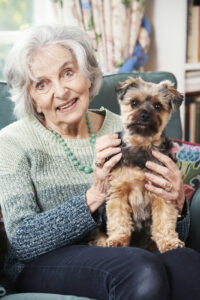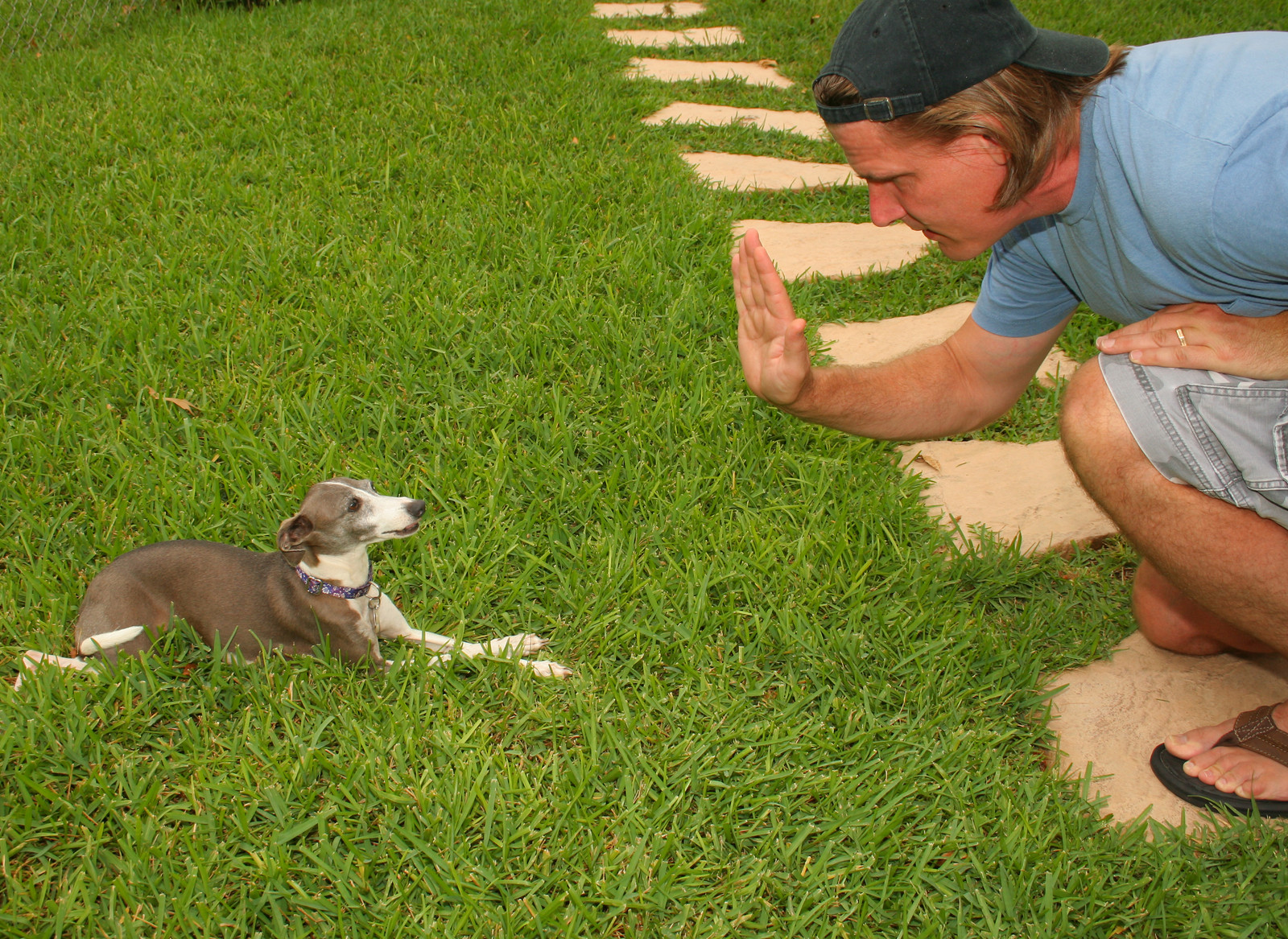Barks Blog
Bridging the Communication Gap
By Angelica Steinker
This article was originally published on page 52-53 in the January 2015 edition of BARKS from the Guild, a bi-monthly magazine published by the Pet Professional Guild.

© Can Stock Photo
Cognizant Behavior Consulting (CBC) is an approach to behavior consulting that provides consultants and clients with guidelines, boundaries and ethics. It is an emotion-centered approach that identifies and makes use of a needs-based approach for both the dog and human client.
Active listening is the process by which a consultant gathers information about dog and human clients, making use of eye contact, observation of client and dog body language, reflecting back what was heard, and empathizing. Active listening ensures shared meaning that both the consultant and the client are talking about the same thing. When a behavior consultant uses active listening in combination with ideal communication, the result can be powerful with the creation of a strong client-consultant relationship.
Why Active Listening?
Have you ever talked to a person and felt like they truly understood you? Did you feel connected to and supported by that person? That person was actively listening to you and that is a skill that we all can learn and refine. Active listening creates a connection, and, in doing so, your client will feel supported. This translates to reinforcement history and empathy which are critically important for truly making a difference in the client’s and dog’s life.
Active listening is much more than simply hearing words – it is maintaining eye contact, observing body language, reflecting back what you heard and asking questions. Active listening takes effort, so you know you are doing it when you feel a drain on your energy. It takes effort to pay close attention to every word, body movement, and track the content of the information that is being shared. It also takes self-control to avoid jumping in prematurely with advice or comments.

reactions is an essential skill
© Can Stock Photo
Listen with Your Eyes
All of us know that body language in human conversation is critically important. While actively listening, you give your client a suggestion to help modify their dog’s behavior but then observe the client leaning back and their brow furrowing. As part of active listening, you check in with them. “I noticed when I gave you that suggestion you looked a little stressed, can you tell me what you were thinking?” you ask. You are demonstrating openness and flexibility which is not only good behavior consulting but will also increase the likelihood that the client will share what they are thinking. Often the client’s response will be something like, “That just isn’t going to work for me.” This is a critical piece of information and enables the consultant to ask additional questions and to avoid non-compliance.
Listening with your eyes applies to the dog also. Most of us are quite skilled at reading dogs, but reading the humans is likely more important because, without owner compliance, we cannot be effective.
Active listening includes reflecting, which means repeating back what you just heard or only a part of what you just heard. For instance, a client might say, “I feel trapped because if I leave the house my dog destroys the front door.” You might reflect (respond), “So you feel trapped.” This assures the client that you understand their issues and concerns.
Some might wonder why it would be important to waste time listening to clients when there is work to be done to help with the dog’s behavior. Fundamentally, if we don’t connect with our clients our ability to help is limited. Our connection and our effectiveness positively correlate. As the bond between you and your client deepens you can spend less time working on your connection and move more into effective modification coaching because you have the trust and shared meaning that you need. Sound familiar? This is just like dog training. First you have to get a reinforcement history then you can begin communicating with your dog and facilitating learning.
Open Questions
Open questions are likely to prompt clients to continue to provide information. “Tell me more about that,” is a superb way to solicit additional information. “Why?” is a closed question that often functions as a conversation stopper. “Why?” also sometimes elicits defensiveness by its sheer abruptness. If you functionally analyze open questions, they tend to create connection and usually lead to more information being provided. Closed questions can often function as positive punishment, stop the flow of information and, even worse, damage the consultant–client relationship. Some examples of open questions include: “How did that work for you?” and “What was that like?” or even “How so?”
Label Alert
Labeling can be a problem in active listening. If a client labels, if the consultant labels, or if the label is not clearly defined for both parties, it can cause misunderstandings. If a client labels their dog as “dominant” a great question would be, “How does it look when your dog does that?” This question will get you more information. Avoid using positive punishment with clients for using dominance-related terms. It can be embarrassing and uncomfortable for clients if you say, “We don’t use that term anymore” or, “You are not using that term correctly.” The use of positive punishment will decrease your reinforcement history and thus lower compliance and your effectiveness. It is best to let it go and note it for another time, or even pass on educating on this topic at all if other things are more important.

© Can Stock Photo
Criticism
As force-free dog trainers we love positive reinforcement. We all want to hear how great we are and how much we are helping, but some of the most productive behavior consulting can result from being able to accept criticism. If a client says, “This is not working for us,” go into active listening mode, ask open-ended questions and be open to what the client is sharing. Consider it a golden opportunity to shift your consulting into turbo drive. For example, if a client says, “I don’t understand why I need all this modification stuff, why can’t you just help me train my dog?”, you might respond, “Tell me more about that.” “When people come over and my dog barks and lunges at them, why can’t I just tell her ‘sit’ and why can’t we make it so that she just stops barking and sits?” the client might ask you.
This dialogue has provided the consultant with very valuable information – clearly the client and the consultant do not have shared meaning about training versus behavior and specifically what is happening regarding this dog’s fear of strangers and how it sets the dog up to be unable to comply with cues. This is a watershed moment in which to educate the client about how a dog’s fear response precludes it from working operantly.
The client’s criticism of the consulting process can become a tremendous turning point in the relationship if the consultant chooses to leverage it by actively listening rather than becoming defensive and closing communication.
Avoiding Confrontation
Force-free communication avoids confrontation. If a client discloses that they have hit the dog, verbally punishing the client by stating, “This is inappropriate and will likely make your dog’s problems worse,” is likely going to make the consultant ineffective. Alternately, the consultant can ask, “Can you tell me more about when that happened?” This open question will prompt the client to share more information, which will enable the consultant to give recommendations that will prevent similar circumstances from happening in the future. This provides a better result for both owner and dog.
Angelica Steinker owns and operates Courteous Canine, Inc. DogSmith of Tampa, FL, a full service pet service business and dog school specializing in aggression and dog sports. She is the National Director of Training for DogSmith Services and Co-Founder of DogNostics Career College.
